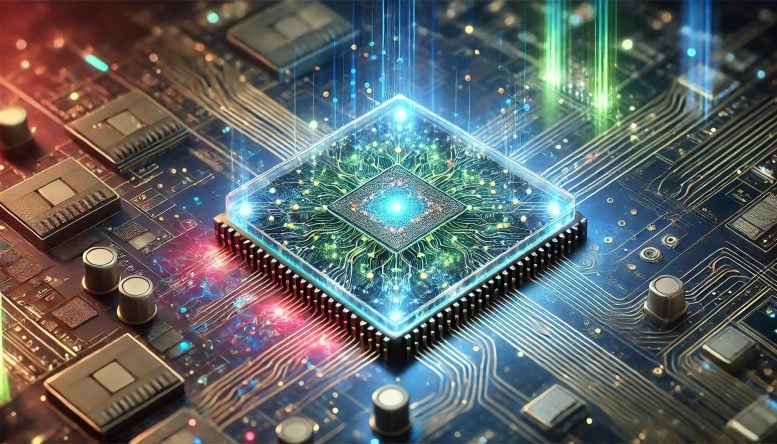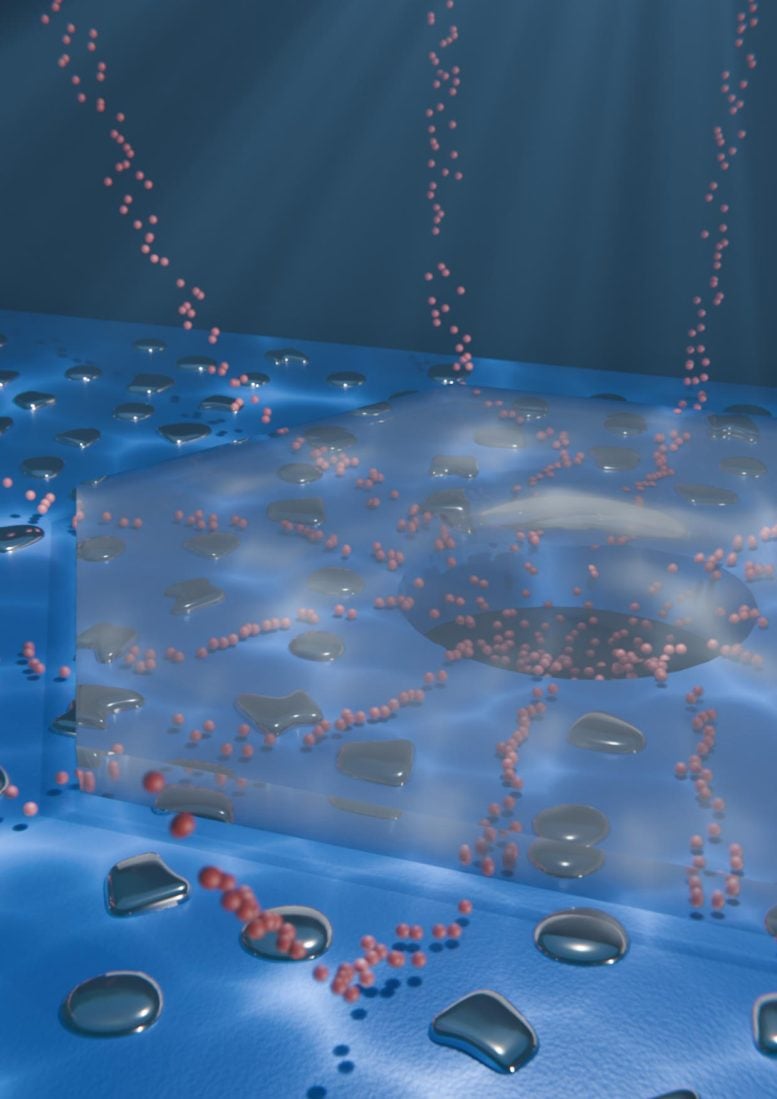
Researchers at EPFL have developed a novel nanofluidic memristor, a device that mimics the brain’s efficient ion-based information processing. Unlike traditional memristors that use electrons, this device uses a range of ions, such as potassium, sodium, and calcium, to switch memory states and store data. The innovative approach could lead to more scalable, performant memory solutions and even fully liquid circuits for applications like brain-computer interfaces. Credit: SciTechDaily
A new nanofluidic memristor mimics the brain’s processing by using ions, enhancing efficiency and scalability in computing.
Memory, or the ability to store information in a readily accessible way, is an essential operation in both computers and human brains. However, there are key differences in how they process information. While the human brain performs computations directly on stored data, computers must transfer data between a memory unit and a central processing unit (CPU). This inefficient separation, known as the von Neumann bottleneck, contributes to the rising energy costs of computers.
The von Neumann bottleneck is a fundamental limitation in computer architecture, named after the mathematician and physicist John von Neumann. It arises from the design of the von Neumann architecture, which uses a single bus for both data and instructions to be fetched from memory. This creates a communication bottleneck because the CPU can either retrieve data or instructions at any given time, but not both simultaneously. Consequently, the speed of data processing is constrained by the memory bandwidth, leading to inefficiencies and slower overall system performance. This bottleneck has driven the development of alternative architectures and optimization techniques to improve data throughput and computational speed.
Developing Nanofluidic Memristive Devices
For over 50 years, researchers have been working on the concept of a memristor (memory resistor), an electronic component that can both compute and store data, much like a 
Artificial nanofluidic synapses can store computational memory. Credit: ©EPFL 2024 / Andras Kis
“We have fabricated a new nanofluidic device for memory applications that is significantly more scalable and much more performant than previous attempts,” says LBEN postdoctoral researcher Théo Emmerich. “This has enabled us, for the very first time, to connect two such ‘artificial synapses’, paving the way for the design of brain-inspired liquid hardware.” The research has recently been published in Nature Electronics.
Memristors in Practice: A Shift to Ions
Memristors can switch between two conductance states – on and off – through the manipulation of an applied voltage. While electronic memristors rely on electrons and holes to process digital information, LBEN’s memristor can take advantage of a range of different ions. For their study, the researchers immersed their device in an electrolyte water solution containing potassium ions, but others could be used, including sodium and calcium.
“We can tune the memory of our device by changing the ions we use, which affects how it switches from on to off, or how much memory it stores,” Emmerich explains.
Innovations in Memory Technology
The device was fabricated on a chip at EPFL’s Center of MicroNanoTechnology by creating a nanopore at the center of a silicon nitride membrane. The researchers added palladium and graphite layers to create nano-channels for ions. As a current flows through the chip, the ions percolate through the channels and converge at the pore, where their pressure creates a blister between the chip surface and the graphite. As the graphite layer is forced up by the blister, the device becomes more conductive, switching its memory state to ‘on’. Since the graphite layer stays lifted, even without a current, the device ‘remembers’ its previous state. A negative voltage puts the layers back into contact, resetting the memory to the ‘off’ state.
“Ion channels in the brain undergo structural changes inside a synapse, so this also mimics biology,” says LBEN PhD student Yunfei Teng, who worked on fabricating the devices – dubbed highly asymmetric channels (HACs) in reference to the shape of the ion flow toward the central pores.
LBEN PhD student Nathan Ronceray adds that the team’s observation of the HAC’s memory action in real-time is also a novel achievement in the field. “Because we were dealing with a completely new memory phenomenon, we built a microscope to watch it in action.”
Future Directions and Applications
By collaborating with Riccardo Chiesa and Edoardo Lopriore of the Laboratory of Nanoscale Electronics and Structures, led by Andras Kis, the researchers successfully connected two HACs with an electrode to form a logic circuit based on ion flow. This achievement represents the first demonstration of digital logic operations based on synapse-like ionic devices. But the researchers aren’t stopping there: their next goal is to connect a network of HACs with water channels to create fully liquid circuits. In addition to providing an in-built cooling mechanism, the use of water would facilitate the development of bio-compatible devices with potential applications in brain-computer interfaces or neuromedicine.
Reference: “Nanofluidic logic with mechano–ionic memristive switches” by Theo Emmerich, Yunfei Teng, Nathan Ronceray, Edoardo Lopriore, Riccardo Chiesa, Andrey Chernev, Vasily Artemov, Massimiliano Di Ventra, Andras Kis and Aleksandra Radenovic, 19 March 2024, Nature Electronics.DOI: 10.1038/s41928-024-01137-9